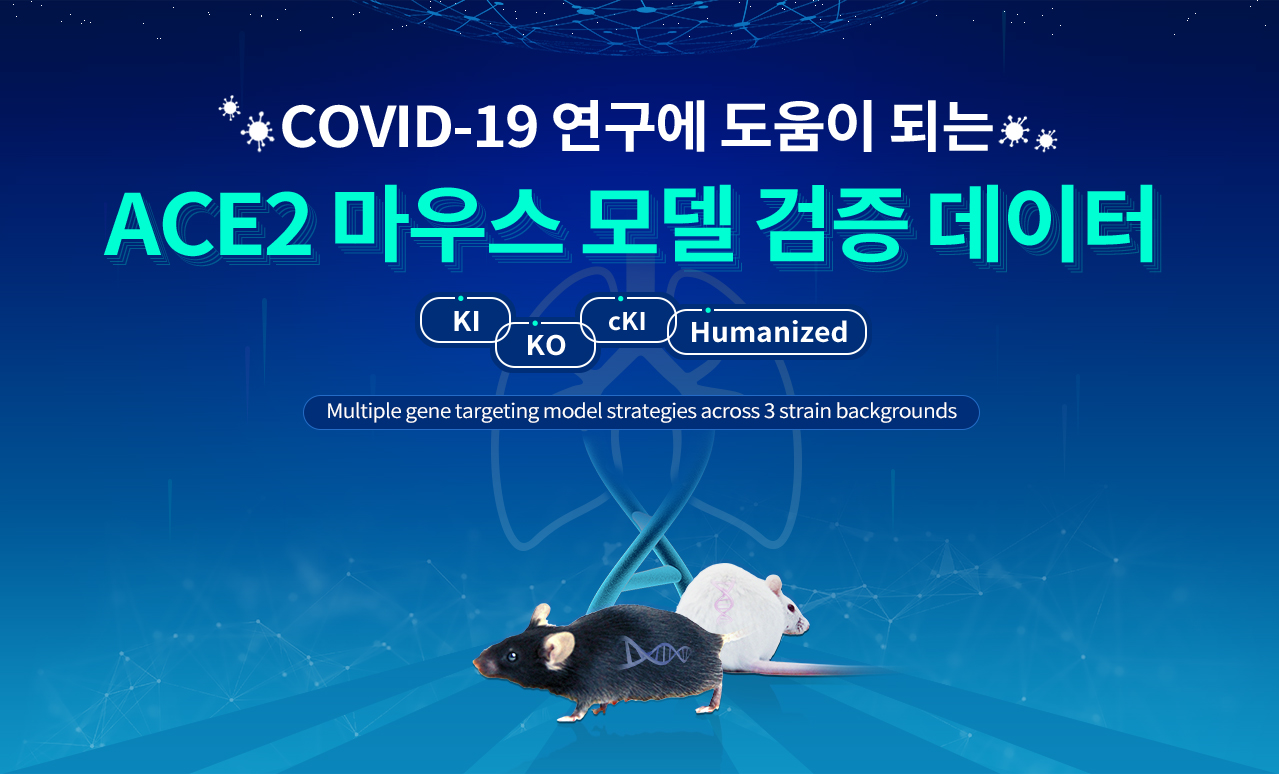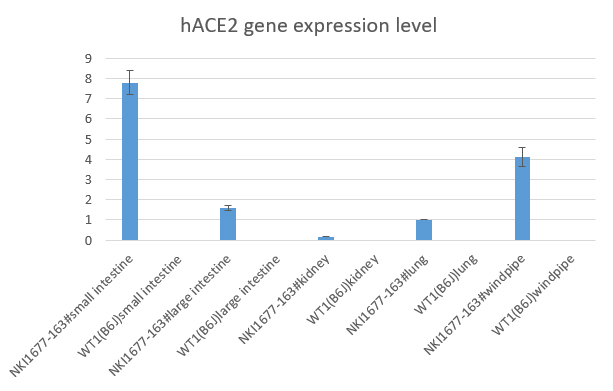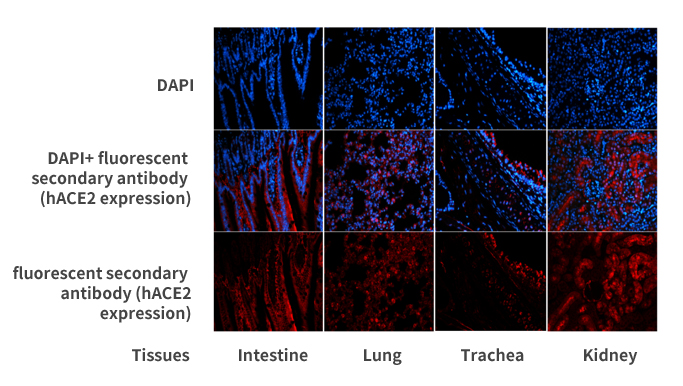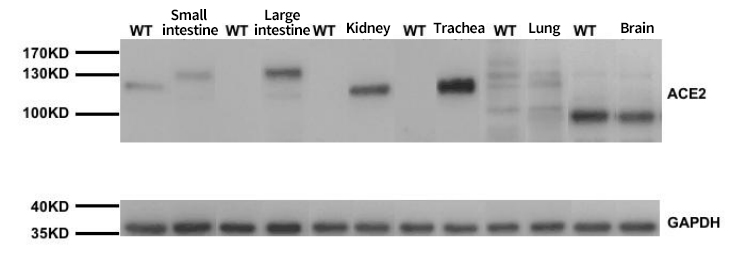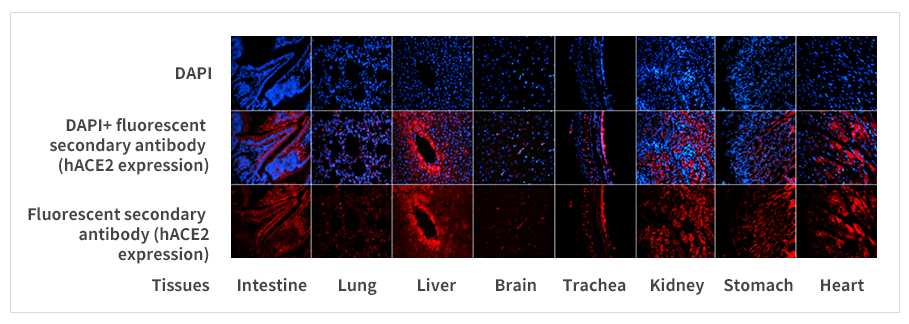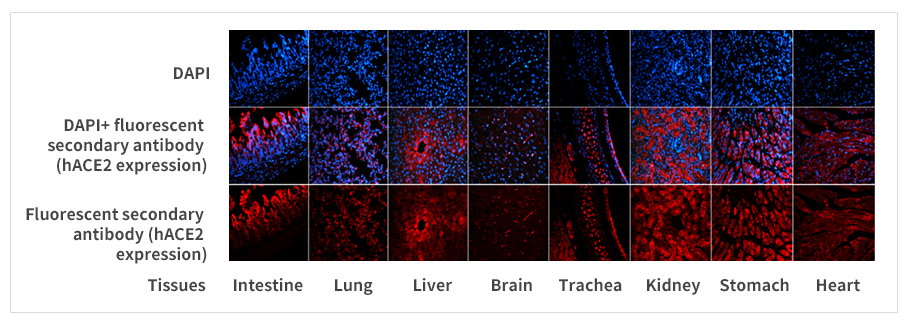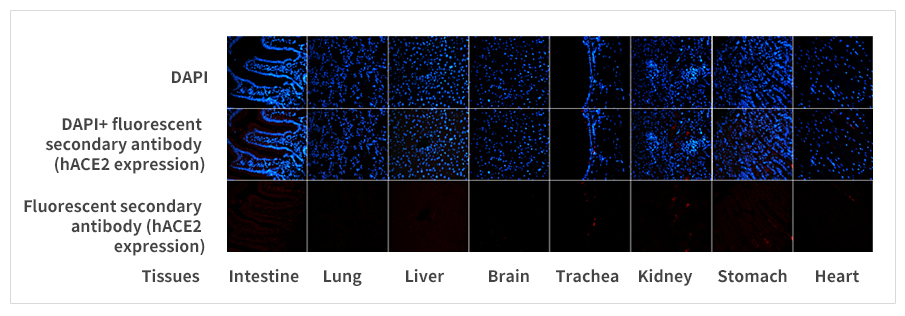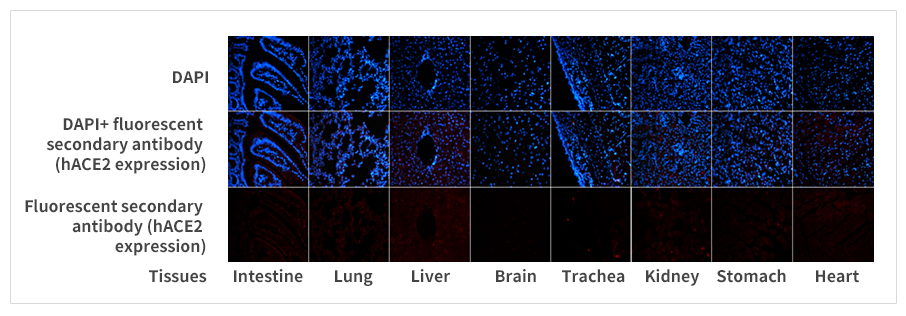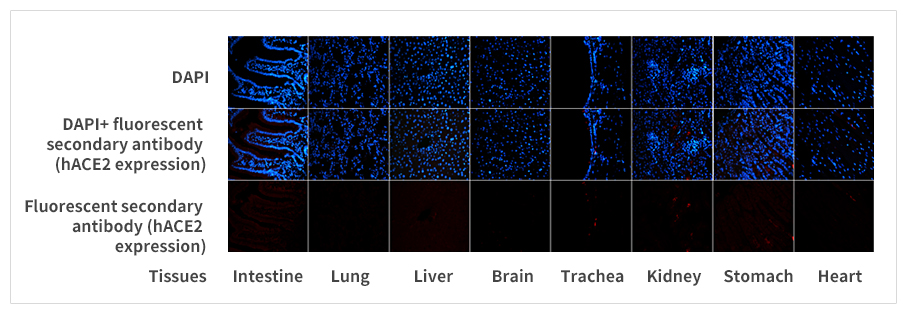1. C57BL/6J ACE2 Knockin Mouse (H11 Locus)
● IHC-P Validation:
The results:
a. Model Generation:
Model Name: H11-ACE2-KI; Strain Background: C57BL/6J
Construction Strategy: The human signal peptide, extracellular domain, transmembrane domain, and
intracellular domain were inserted into the mouse H11 locus.
b. After the model was established, different tissues of the mice were fixed in
formaldehyde, embedded in paraffin, and evaluated by immunohistochemical experiments. The
results showed different levels of ACE2 expression in the intestine, lung, liver, brain,
trachea, kidney, stomach, and heart, while K18 promoter still has nonspecific expression, which
can be selected according to different experimental needs.
● C57BL/6J Negative Control:
The results:
a. Mouse Model: C57BL/6J background, negative control.
b. Tissues of C57BL/6J blank control mice were fixed in formaldehyde, embedded
in paraffin, and evaluated by immunohistochemical experiments. The result reported
negative in the intestines, lungs, liver, brain, trachea, kidney, stomach, and heart.


